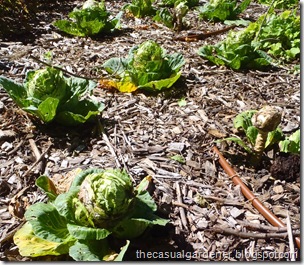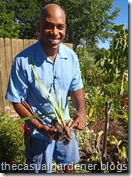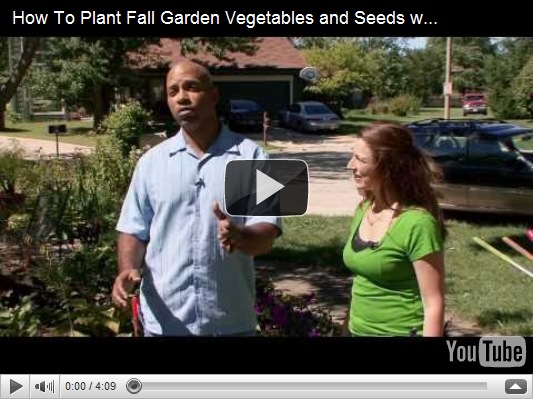Fall Gardening and Planting Tips With William Moss and Me
 This season earwigs, caterpillars, chipmunks, squirrels, rabbits, and insects of every sort chose to attack my cabbage.
This season earwigs, caterpillars, chipmunks, squirrels, rabbits, and insects of every sort chose to attack my cabbage.
The solution? I left them in the ground, labeled them “companion plants” and took the loss. Why? By keeping the plants in the ground through most of the season I lured all the evil little beasties away from my other prized vegetables, thereby saving the  garden. (Hooray!)
garden. (Hooray!)
By the time the fall season came around this year, the garden was ready for the critter-eaten cabbages to be replaced. William Moss, a good friend of mine and fellow sustainable gardener, came out to the garden a few weeks ago and gave me some great tips for fall planting and managing the fall garden. We made a how-to video (below) discussing how easy it is to plant seeds and fall vegetables at the end of the season. Enjoy!
Special thanks to William Moss and his amazing video team for making our mini-video series so fabulous! William has a fantastic list of accomplishments beyond tv; he works with the National Gardening Association as “Moss In the City”, and on his websites, www.garden.org/urbangardening & www.wemoss.org, where he chronicles the challenges of gardening in a city and discusses horticultural techniques. William is about to complete a Masters Degree program in the Natural Resources and Environmental Sciences program offered by the University of Illinois at Urbana Champaign. His goal – to expand on his passion for creating natural wildlife corridors in urban areas. Way to go William!
— Burpee Home Gardens supplied the vegetables grown in the garden this season. I write many instructional stories and videos with their incredible vegetable products and donate a large portion of the vegetables to the local food pantry when harvested.





